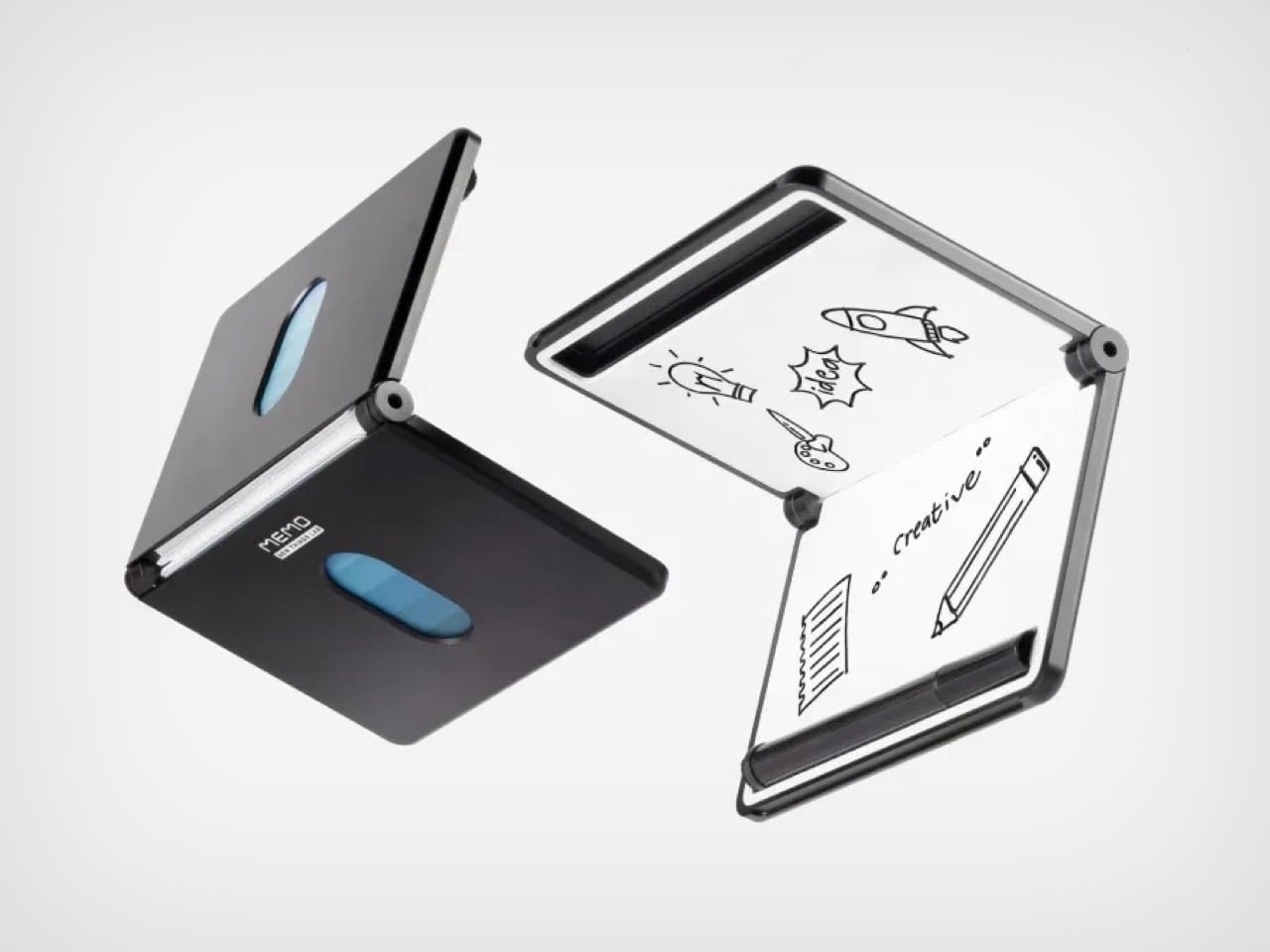This Bizarre Wallet + Whiteboard Might Just Be the Most Creative EDC Ever Made
You remember that scene in the first Avengers movie? Captain standing in front of Tony Stark, asking him what he is without the suit? Tony replies without a blink – Genius, billionaire, playboy, philanthropist. I imagine that if this same conversation were to happen in the EDC realm, most wallets are essentially just sheets of leather that hold cash, cards, and currency. Strip the valuables away, and you’ve got nothing but carcass left. The MEMO wallet from New Things Lab, however, has a fairly essential feature even when it isn’t holding anything – it’s a dry-erase whiteboard that also parades as a wallet. Yes, you read that right. A whiteboard. In your wallet.
The concept sounds absurd until you actually think about it. When was the last time you saw someone pull out a notepad to jot something down? Probably never, because nobody carries those anymore. But ideas still hit at random moments, phone numbers still need to be scribbled down, and sometimes you just need to sketch something out quickly. The MEMO wallet acknowledges this reality by making the notepad part of something you’re already carrying anyway.
Designer: New Things Lab
The wallet’s design is deceptively simple. Imagine a bifold wallet, but instead of opening the bifold to reveal your cards and cash, you open it to reveal a two-panel dry-erase whiteboard along with a built-in removable marker. Imagine a tiny notebook – that’s essentially what you get. The panels themselves are whiteboards on the inside, but on the outside, you’ll see a slot that lets you store up to 6 cards. Each panel has enough space for 3 cards, covering most use-cases. I, for example have 3 payment cards, 2 ID cards, and 1 access card for my coworking space. That’s pretty much all I need to carry on a daily basis.
The dry-erase whiteboard is an extra feature that my creative brain personally loves. It feels intuitive, allowing me to quickly take notes without using my phone. There’s no screen-time, the ideas aren’t stored on a device that has internet access, and you can do everything from taking notes to making doodles – analog, baby. The marker docks right inside the wallet (although I wish it were slightly thinner), and when closed, your notes stay hidden and not at risk of accidentally getting wiped away inside your pocket. The marker itself has a built-in eraser just in case you want a fresh slate.
New Things Lab built this thing from precision-milled 6063 aluminum, the same stuff used in window frames, so it can handle daily abuse without showing wear. The CNC machining gives it clean lines and tight tolerances that feel premium in hand. Three anodized finishes are available: Charcoal Black, Slate Grey, and Gilded Rose, though the darker options might disappear in the depths of your bag if you’re not careful.
The whiteboard surface works exactly as advertised. Write on it, erase it, repeat. No paper waste, no running out of pages, no ink bleeding through. Whether you’re sketching out a floor plan, writing down WiFi passwords, or just doodling during a boring meeting, the surface handles it all. The magnetic closure keeps everything secure, and the compact 108 x 74 x 11mm dimensions slip into any pocket without bulk.
RFID blocking comes standard, protecting your cards from digital pickpocketing attempts. The aluminum construction naturally shields electromagnetic signals, so this isn’t some afterthought feature tacked on for marketing purposes.
The trade-offs are real though. Six card slots won’t accommodate everyone’s plastic collection, and the aluminum construction makes it heavier than typical wallets. The pen, while clever, could easily get lost if you’re not careful about clipping it back in place. Some people might find the dry-erase format awkward after years of paper and digital notes.
But for minimalists who actually use their EDC gear, the MEMO wallet makes a compelling case. It’s genuinely innovative without being gimmicky, practical without sacrificing style. In a world of identical carbon fiber and leather wallets, something this different deserves attention. At around $90, it’s not cheap, but the build quality and unique functionality justify the premium. Sometimes the best ideas are the ones that seem completely obvious once someone finally does them.
The post This Bizarre Wallet + Whiteboard Might Just Be the Most Creative EDC Ever Made first appeared on Yanko Design.

